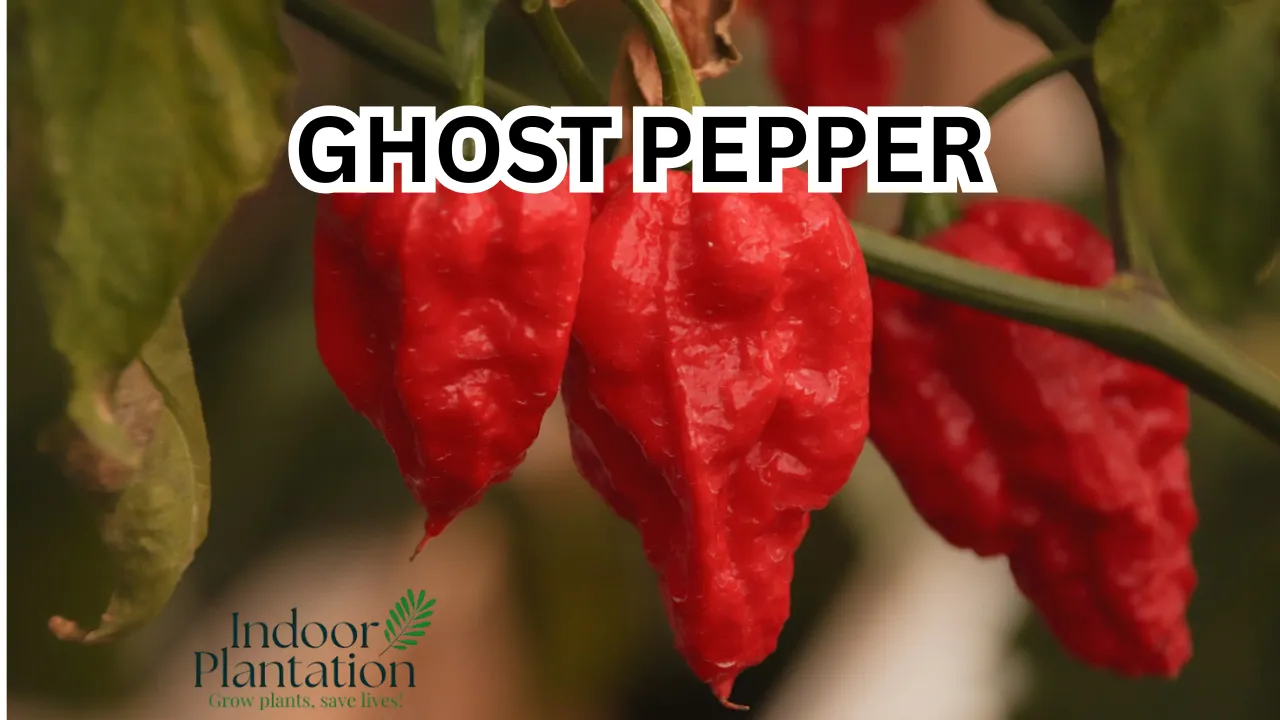Introduction to Ghost Pepper
The ghost pepper, known locally as Bhut Jolokia, is famous worldwide for its extreme heat. It comes from Northeast India, particularly Assam, Nagaland, and Manipur. The name ghost pepper reflects its sudden intense heat that surprises you, just like a ghost.
Origin and History of Ghost Pepper
For hundreds of years, farmers in Northeast India grew the ghost pepper. The region’s perfect weather and soil helped the pepper grow into something truly special. It became widely known after setting a world record in 2007 as the world's hottest pepper. Although hotter peppers exist today, the ghost pepper remains extremely popular.
Appearance and Taste of Ghost Pepper
The ghost pepper is thin and wrinkly with colors ranging from red, orange, yellow, to even chocolate and purple. It has a fruity and smoky flavor that comes before its strong heat. The heat spreads quickly and lasts a long time, often causing tears and a burning sensation.
How Hot is Ghost Pepper?
Ghost pepper is extremely spicy, measuring over one million units on the Scoville scale. It is about a hundred times hotter than a jalapeño. Eating even a small piece can cause intense reactions like sweating, watery eyes, and hiccups.
Uses of Ghost Pepper in Cooking
In its native India, ghost pepper is used in everyday cooking. It is popular in pickles, chutneys, curries, and smoked meats. Chefs worldwide now use it to make sauces, marinades, oils, and even spicy snacks like chips and candies. Despite its heat, it is loved for the unique flavor it adds to dishes.
Health Benefits of Ghost Pepper
Ghost peppers contain capsaicin, a compound with possible health benefits. It helps digestion, reduces pain, improves blood flow, and might even lower cholesterol. Locally, it is used to treat stomach pain, headaches, and colds. More research is needed to confirm these medical uses fully.
10 Easy Ghost Pepper Dishes for Bold Spice Lovers
Growing Ghost Pepper at Home
Growing ghost pepper requires patience. It loves warm weather around 30°C, rich soil with good drainage, and regular watering. The seeds sprout within a month and mature peppers appear in about five months. Plants can grow up to one meter tall and produce many peppers.
Caring for Ghost Pepper Plants
Ghost pepper plants need daily care. Water the plant regularly but avoid too much water that could cause root rot. Keep plants in a sunny place and use organic compost for the best growth. Always wear gloves when handling peppers to protect your skin from burning.
Pruning Ghost Pepper Plants
Pruning helps the ghost pepper plant stay healthy and grow better peppers. Remove dead, yellow, or weak leaves regularly. Trim lower branches to improve air circulation. Cut off any damaged or diseased branches to keep the plant strong and productive.
Common Problems and Solutions
Sometimes, ghost pepper plants face pests and diseases. Common issues include aphids, fungus, and whiteflies. You can treat these by using natural pesticides like neem oil or mild soap water spray. Regularly checking your plants helps to catch problems early and keep your peppers safe.
Harvesting and Storing Ghost Pepper
When ghost peppers turn their bright final color, usually red or orange, they are ready for harvest. Use scissors to cut the peppers gently from the plant. To store them, dry or freeze the peppers. Dried peppers last for years and can be powdered or used whole later.
Cultural Significance of Ghost Pepper
In Northeast India, ghost pepper is deeply connected to the local culture. It is not just food but also used as medicine and protection against wild animals. The pepper is also popular in online spicy eating challenges worldwide.
Safety Tips When Using Ghost Pepper
Always handle ghost peppers with care. Use gloves and avoid touching your face or eyes. If you feel too much heat, drink milk or eat yogurt to soothe the burning feeling. Be careful about the amount used, especially when cooking for children.
Modern Challenges in Ghost Pepper Farming
Today, farmers face challenges like soil quality decline and mixed seeds affecting the heat and flavor of ghost peppers. To protect their quality, careful farming practices and seed management are important.
Global Popularity of Ghost Pepper
The ghost pepper has gained global popularity. Many countries outside India grow this pepper for its unique taste and extreme heat. It is now an important crop in Africa, America, and Europe, used in many spicy food products.



